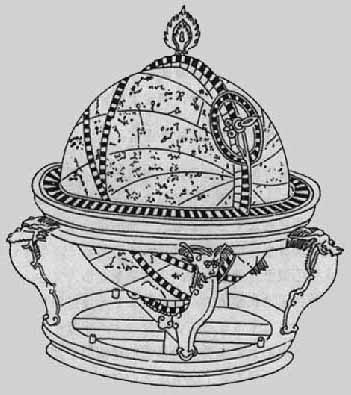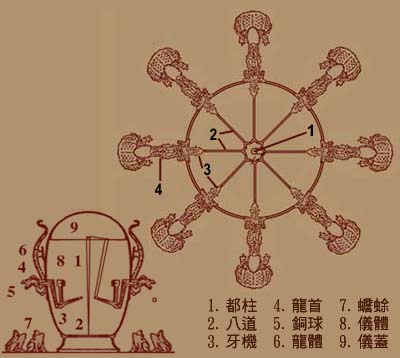| doctor | Zhang Heng |
| alias | stylePing-zi |
Zhang Heng (78-139 AD), courtesy name Pingzi, was born in Xi'e, Nanyang (present-day Nanyang County, Henan Province) in the third year of the Jianchu era of Emperor Zhang of the Eastern Han Dynasty. His great-grandfather and grandfather had both been officials and were very wealthy, but by his father's generation, the family had fallen into decline.
From a young age, Zhang Heng was intelligent and studious, with a wide range of talents. At the age of fifteen or sixteen, he traveled abroad to study and befriended many learned and ambitious scholars, such as Ma Rong, Dou Zhang, Wang Fu, and Cui Yuan, who had a significant influence on his character, scholarship, and diverse abilities. Although Zhang Heng was still in his twenties, his knowledge surpassed that of many. He declined several opportunities to become an official and instead went to Nanyang Commandery to work as an aide, responsible for drafting documents. During this period, he completed works such as "Tong Sheng Ge," "Ding Qing Fu," "Liang Jing Fu," and "Nan Du Fu," which showcased the spirit and风貌 of the era two thousand years ago. The rich and华丽 language used in these works elevated the ci and fu poetry of the Han Dynasty to new heights. In his later years, Zhang Heng produced other valuable works, including "Gui Tian Fu," "Si Chou Shi," and some抒情小赋.
The governor of Nanyang Commandery was promoted by the emperor due to his outstanding political achievements. Zhang Heng, however, did not intend to accompany his superior to Luoyang and instead decided to return home to study in seclusion. During this period, he read extensively and delved deeply into ancient philosophical and scientific texts such as the "Book of Changes," "Tai Xuan Jing," and "Mozi." This broad and diverse learning allowed him to integrate knowledge of geometry, mechanics, machinery, geography, surveying, and painting, making Zhang Heng a "polymath" of the Eastern Han Dynasty.
Epoch-making Contributions to AstronomyAfter accumulating profound knowledge and skills, Zhang Heng no longer declined recommendations. In 111 AD, at the age of 34, he went to the capital to serve as "Shangshu Langzhong." Four years later, he was appointed as "Taishi Ling," responsible for observing the sun, moon, stars, wind, clouds, snow, and rain, and for formulating calendars, equivalent to the head of today's Central Meteorological Bureau or Observatory. During his tenure as Taishi Ling, Zhang Heng systematically observed celestial bodies, conducted theoretical research, and produced works such as "Lingxian" and "Huntian Yi Zhu," which comprehensively explained the evolution of the universe, the structure of heaven and earth, and the nature and movement of the sun, moon, and stars, elevating ancient Chinese astronomy to a new level.
Zhang Heng's contributions to astronomy can be summarized in four points:
1. Achievements in Celestial Observation
Zhang Heng concluded that there were 124 permanently visible star officials (in ancient China, "star officials" were similar to modern "constellations," with each star official consisting of several to dozens of stars) and named 320 star officials. Today, there are between 2,500 and 3,000 stars visible above the 6th magnitude, which is roughly consistent with Zhang Heng's observations.
Additionally, Zhang Heng noted that there were 11,520 "microstars" (less bright stars). According to modern astronomers, the number of stars visible to the naked eye between the 6th and 7th magnitudes can reach over 14,000. Zhang Heng's observations are not far off from the actual numbers today.
Zhang Heng also measured the angular diameters of the sun and moon as 1/736 of the celestial circumference, or 29'24", which is close to the modern average angular diameters of the sun and moon at 31'59" and 31'5" respectively. Given the简陋 astronomical instruments available 1,800 years ago, measuring the angular diameters of the sun and moon was no small feat.
2. Advocating the "Huntian Theory" and Creating the "Huntian Yi"
The "Armillary Sphere" is an instrument made based on the concept of the "Celestial Sphere Theory." It is made of copper and contains several rotatable layers of circles, on which the sun, moon, and various stars are engraved. This large copper sphere is driven by water power, rotating at the same speed as the Earth's rotation. The movement of the Riyue (GB24) star can be observed from the armillary sphere, which was a remarkable astronomical invention at the time.
3. Establishment of an Advanced Theory of Planetary MotionHe proposed that the five stars (referring to Venus, Jupiter, Mercury, Mars, and Saturn) move faster when closer to the Earth and slower when farther away. This was discovered through long-term observation. Zhang Heng placed our Earth at the center of the universe, which is an incorrect view. The German astronomer Kepler discovered that the speed of planetary motion is uneven; planets move faster when closer to Taiyang (EX-HN5) and slower when farther away. Different planets also follow this rule.
4. Scientific Explanation of the Causes of Solar and Lunar Eclipses and the Changes in the Moon's Phases
In ancient times, lacking scientific knowledge, people were terrified when they saw solar and lunar eclipses. In "Lingxian," Zhang Heng explained the causes of solar and lunar eclipses and the principles of the moon's phase changes, which are entirely consistent with modern scientific evidence.
Achievements in Mechanics and Mathematics
Zhang Heng also had remarkable achievements in mechanical manufacturing. He successively created the south-pointing chariot, the odometer, the self-flying wooden bird, the seismoscope, and the wind vane. Making mechanical devices requires a good foundation in mathematics, so he also authored "Suan Wang Lun," which is now lost. He also calculated that the value of pi is between 3.14 and 3.16.
During Zhang Heng's time, earthquakes were frequent. From 96 to 125 AD, there were 23 major earthquakes in 30 years, several of which occurred near Luoyang. As the Grand Historian, Zhang Heng, after years of experimentation, invented the world's first instrument to determine the time and direction of earthquakes in 132 AD—the "seismoscope."


The seismoscope was designed based on the principle of inertia. After an earthquake, seismic waves would cause a pendulum-like "central column" inside the seismoscope to swing towards the direction of the seismic waves, and through a lever, the dragon's mouth representing that direction would open, causing the copper ball to fall.
Zhang Heng on the Far Side of the Moon
The year after Zhang Heng detected the Longxi earthquake with the seismoscope, he passed away due to illness at the age of 62. Zhang Heng was a versatile talent and was listed as one of the six famous painters of the Eastern Han Dynasty. His achievements in astronomy are highly revered worldwide. In 1970, an international organization named a crater on the far side of the moon after Zhang Heng; in 1977, a minor planet in the Taiyang (EX-HN5) system, numbered 1802, was also named after him.




